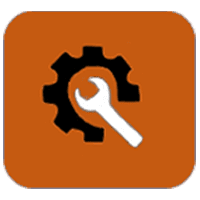Tools and Trainings
Launch web application.
Climate Engine uses Google’s Earth Engine for on-demand processing of satellite and climate data via a web browser.
Features include:
- On-demand value and anomaly mapping
- Time series and statistical summaries
- Downloadable results in GeoTIFF format, and time series results as .csv or .xlsx format
- Share map or time series results with web URL links
Visit the RTEC website.
The Rangeland Technology and Equipment Council (RTEC) is an informal organization of land managers, engineers, researchers, academics, and private industry representatives interested in developing new rehabilitation equipment and strategies.
Access courses.
These online courses were developed by Wildland Fire Management Research, Development, and Application, Fire Regime Condition Class, LANDFIRE, National Wildfire Coordinating Group, and National Advanced Fire and Resource Institute.
Learn more and access ST-Sim tool
Using computer-aided modeling, land management teams can use ST-Sim to document or justify management actions in forthcoming forest plans and NEPA documentation. ST-Sim allows managers to ask landscape-wide “what-if” questions based on different management regimes and land treatments while estimating interactions with expected climate changes. With this tool, the scientists are able to provide land managers with worst-case and best-case scenarios under different conditions.
View user guide.
Decision makers need better methods for identifying critical ecosystem vulnerabilities to changing climate and fire regimes. Climate-wildfire-vegetation interactions are complex and hinder classification and projection necessary for development of management strategies. One such vulnerability assessment (VA) is FireCLIME VA, which allows users to compare management strategies under various climate scenarios and gauge the potential effectiveness of those strategies for reducing undesirable impacts of climate on wildfire regimes and resulting impacts of wildfire on natural ecosystems. Developed as part of the SW FireCLIME science-management partnership, FireCLIME is meant to be quick, flexible, and amendable to a range of data inputs (literature review, expert, and modeling or monitoring activities). These inputs allow users to easily compare various fire-climate outcomes for one or more ecosystems of interest. Users can use literature, hypothetical scenarios, or quantitative data to implement the FireCLIME VA tool. This tool, unlike other vulnerability assessment, is best used iteratively to explore a range of possible scenarios and management strategies.
Access the Socioeconomic Profile tool
The U.S. Fish and Wildlife Service Socioeconomic Profile tool is a free, web-based tool created by Headwaters Economics to help government agency land managers, economists, planners, outreach specialists, researchers, citizen/private sectors, and others explore socioeconomic conditions near Service units.
Access SAVS Tool.
The Forests Service, Rocky Mountain Research Station has developed a System for Assessing Vulnerability of Species (SAVS) that quantifies the relative impact of expected climate change effects for terrestrial vertebrate species.
Access the Climate Toolbox website.
A collection of web tools for visualizing past and projected climate and hydrology of the contiguous United States of America and for addressing questions related to agriculture, climate, fire conditions, and water.
Visit the Biomass Ready App website.
Biomass Ready is a quick and easy process to help teams design new community buildings that can better adapt to an uncertain energy future. Today the economics of biomass may not be favorable, but your community will own and operate your new building for decades, perhaps even a century. Over the lifetime of your building, your community may decide to install a biomass boiler system. Will your building be ready? Biomass Ready will help you avoid inadvertently creating barriers that make adding biomass in the future prohibitively expensive. If you can add a biomass system to your building without extensive deconstruction or demolition, your building is Biomass Ready. And Biomass Ready is simple enough that you can include it in your RFP (Request for Proposals) process – encouraging your bidders to compete on designing for future energy flexibility!
Access training modules.
This learning series responds to Section 7.b.iii, Action Item #5 within the Fuels section of the 2015 Integrated Rangeland Fire Management Strategy, which calls for a comprehensive knowledge transfer program to enhance the fuels management program’s role in sagebrush-steppe management. The Strategy is intended to improve the efficiency and efficacy of actions to address rangeland fire, to better prevent and suppress rangeland fire, and improve efforts to restore fire-impacted landscapes.
The learning modules synthesize the state of the science for six management topics:
- Background and origins of the conservation problems facing the sagebrush steppe and greater sage-grouse
- Understanding and applying the concepts of resistance and resilience
- Management of sagebrush ecosystems experiencing conifer encroachment
- Management of sagebrush ecosystems at risk of or invaded by invasive annual grasses
- Restoration of sagebrush steppe ecosystems
- Issues specific to the eastern range of greater sage-grouse





